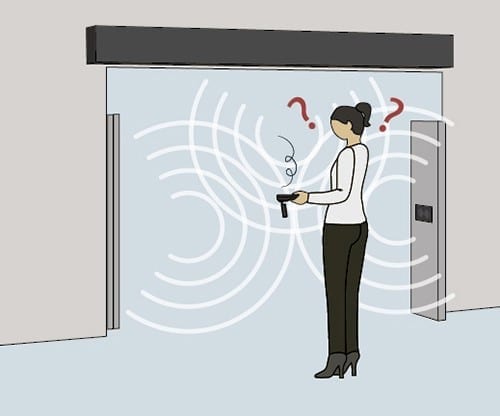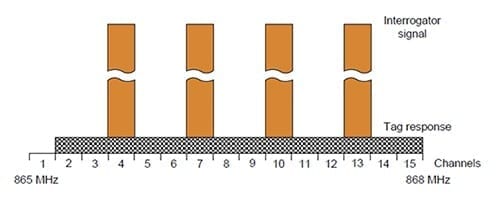HOW TO SOLVE CHALLENGES WITH RFID READER COLLISION
In this expert article our sensortech specialists discuss the RFID reader collision problem, which may occur when several UHF RFID readers are used simultaneously in the same space, such as a DC. Let us give you a concrete example to begin with, before we start working through the solution.
A staff member is performing a stock inventory with a mobile UHF RFID reader. Everything flows smoothly until the mobile UHF RFID reader notes that there is another UHF RFID reader in the DC – a fixed one. What happens – do the readers freak out?
Having different kinds of rfid readers in the same space – how big of a problem is it?
Shortly, what happens is that the readers detect each other. This is called the RFID reader collision problem.
By using the term ‘reader collision’ we define it as a phenomenon where an interrogation signal from a specific reader interferes the operation of a tag or another reader. This sort of issue is augmented particularly in a dense reading environment, for example in a warehouse where multiple readers are operating in the same environment.

LBT – Listen before you talk
The channels used earlier in the EU region were defined by EN 302 208 or EN 300 220. These were allocated in 10 high power channels. In addition, a system called the LBT system (Listen Before Talk) was in use. The idea was that a reader would listen for other traffic on the channel and only transmit a signal if the channel’s free. Furthermore, the tag would use the same channel to respond. This method works quite nicely if the number of readers is limited to only a few readers. The threshold for a specific channel was low. In order to receive permission to use a particular channel, the only requirement was that no other readers would be operating on that channel within a radius of approximately 1 km (when operating at maximum output power). In other words, you could say that there could be only 10 readers operating in the area of 1 km radius without any reduction in performance.
Another issue that could occur is when Reader A is reading a specific tag population and Reader B is operating in close proximity to Reader A. In this case, Reader B’s signal might interfere with the tag reading. This is due to the tags having no channel selectivity. In turn, this means that the tags interoperate only on the power they are receiving. As the stronger interrogation signal will overrun the weaker one, only one reader can read the specific tag population at a specific time.
Introducing a new channel – The DRM
When the reader collision problem with multiple readers using LBT was acknowledged, the ETSI (European Telecommunications Standards Institute) introduced the new channel plan and method for multiple readers to operate in a dense reading environment. This method is called DRM (Dense Reader Mode). The number of high-power channels in which readers operate was limited to four (4).
Free channels, which were dedicated to tag replays, were kept between high-power channels. The Miller sub-carrier encoding and link frequencies of 200 – 400 kHz were adopted in order to remove the tag away from the channel of the reader. Generally, link frequency defines the spacing between the reader transmission frequency and the tag replay frequency. The order of the Miller encoding (M2/M4/M8) impacts the spectral density of the tag replay concentrating around the link frequency offset. The ETSI channel plan is introduced in Picture 2.

HOW TO AVOID RFID READER COLLISION
As the technology constantly develops, certain types of problems have been solved. When deploying the new channel plan and the DRM, the reader is no longer required to use the LBT technique. This will increase the reading speed since the reader doesn’t have to listen for other traffic every time before transmitting. Moreover, a single reader will no longer block the channel for itself in large surrounding areas. Furthermore, the tag replays, which are 40 – 120 dB lower than the readers’ signals, are not blocked because of the dedicated tag replay channels.
There are still some limitations. The performance of the DRM filters inside the reader and the overall robustness of the receiver design will now limit the performance when readers are operating in close proximity. Also, the used channels and the directivity of the reader antenna will affect performance because they greatly determine the isolation between the two readers.
In fixed installations a good practice is to not have two readers equipped with directive antennas facing each other. If this is the case, the reading needs to be sequential.
Want to also understand how to compare different reader power outputs? Read our expert article.